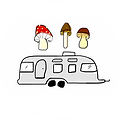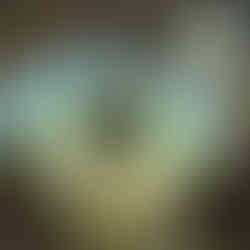What are Bolete Mushrooms?
- Kara Thornton
- Aug 25, 2021
- 2 min read
Featured below: Tylopilus Plumbeoviolaceus "Violet-Gray Bolete"

What makes a mushroom a "Bolete" mushroom?
Like many mushrooms, these are grouped into an umbrella term for easier categorization. Though Bolete refers to the genus Boletus, not all Boletes are species of the Boletus Genus.
Generally these mushrooms considered Boletes feature a plump body with a spongey pore surface made up of tiny tubes that extend down from the cap. Of course, in typical mushroom fashion there is a handful of "Gilled Boletes" so don't get too comfortable...
Bolete mushrooms can display some of the most beautiful colors in the mushroom world. Many Boletes are already colorful, and then stain different colors, creating an almost tie-dye look as they bruise. (see photos below)
(As with all mushrooms, if you can help it, don't always pluck them. BUT for identification purposes, it does help to be able to study the entirety of the mushroom; therefore if you're making an intentional decision to properly ID a new mushroom, definitely pluck it from the ground in order to analyze all parts of the mushroom.)
Here are some basic tips for Identifying Bolete Mushrooms in particular:
Observe the cap: texture, colors, and shape.
Gently pull the mushroom up from the base, trying your best to keep the mycelium in tact as you pull it up from the ground. Mycelium color is a big help in properly identifying bolete mushrooms.
Once you've got a visual of the entirety of the mushroom, study the shape of the stipe, look for any reticulation, scabers, or smooth textures.
Observe the underside of the cap, the color, the size of the pores, and mark it a couple times to see if the pore surface stains any color.
Next use your knife to slice a cross-section of the mushroom. Here you can study the staining of the body of the mushroom and the pore tubes to see whether they're deep or shallow compared to the cap flesh.
Here are a couple basic terms used in Bolete Mushroom Identification:
Scabers: an organic speckled pattern made of small, stiff granular projections
Reticulation: a netting pattern, either faint and flush or robust and textured
Staining: when the flesh of a mushroom bruises a different color
Suggested Reading:
Boletes of Eastern North America Alan E. Bassette, Arleen R. Bassette, & William C. Roody

.png)




















Comments